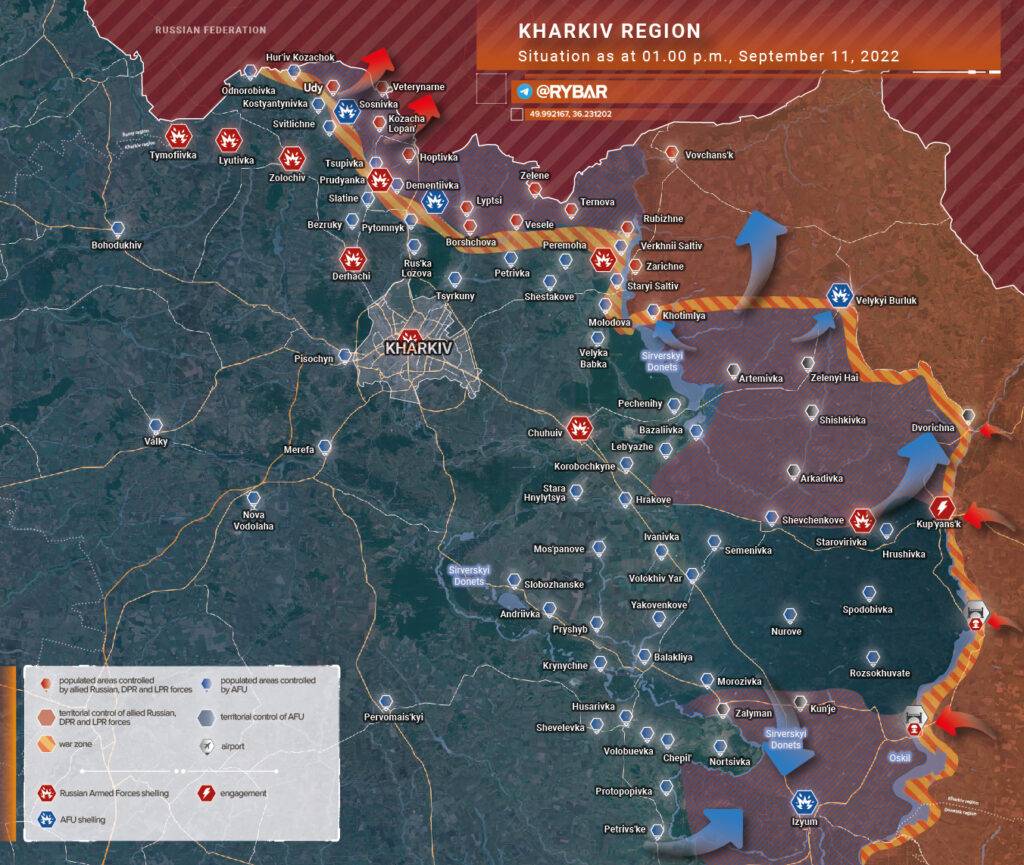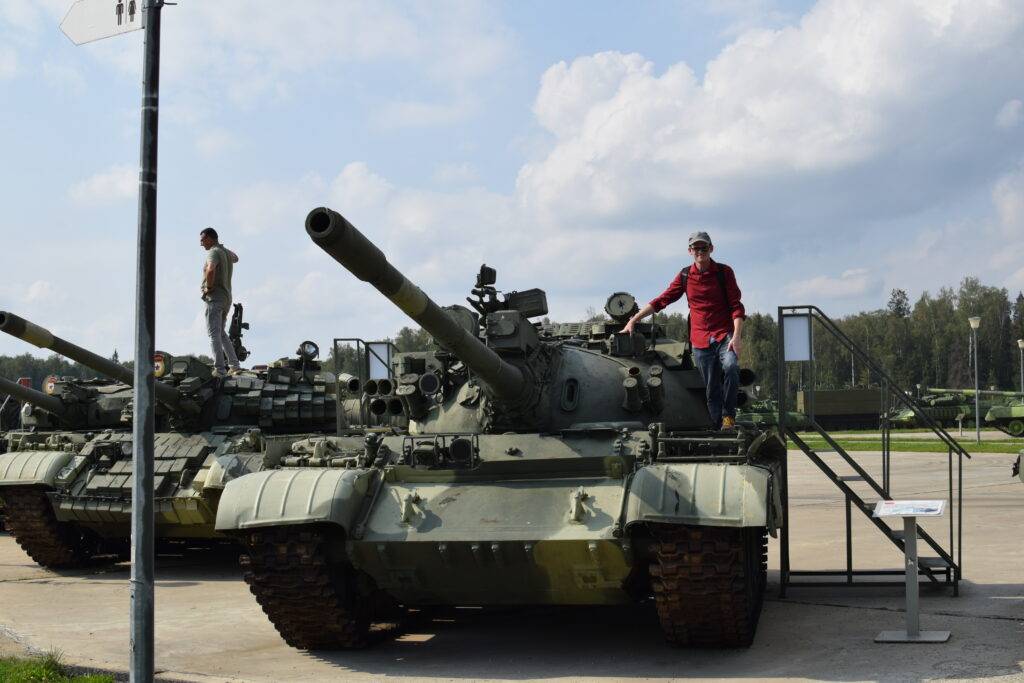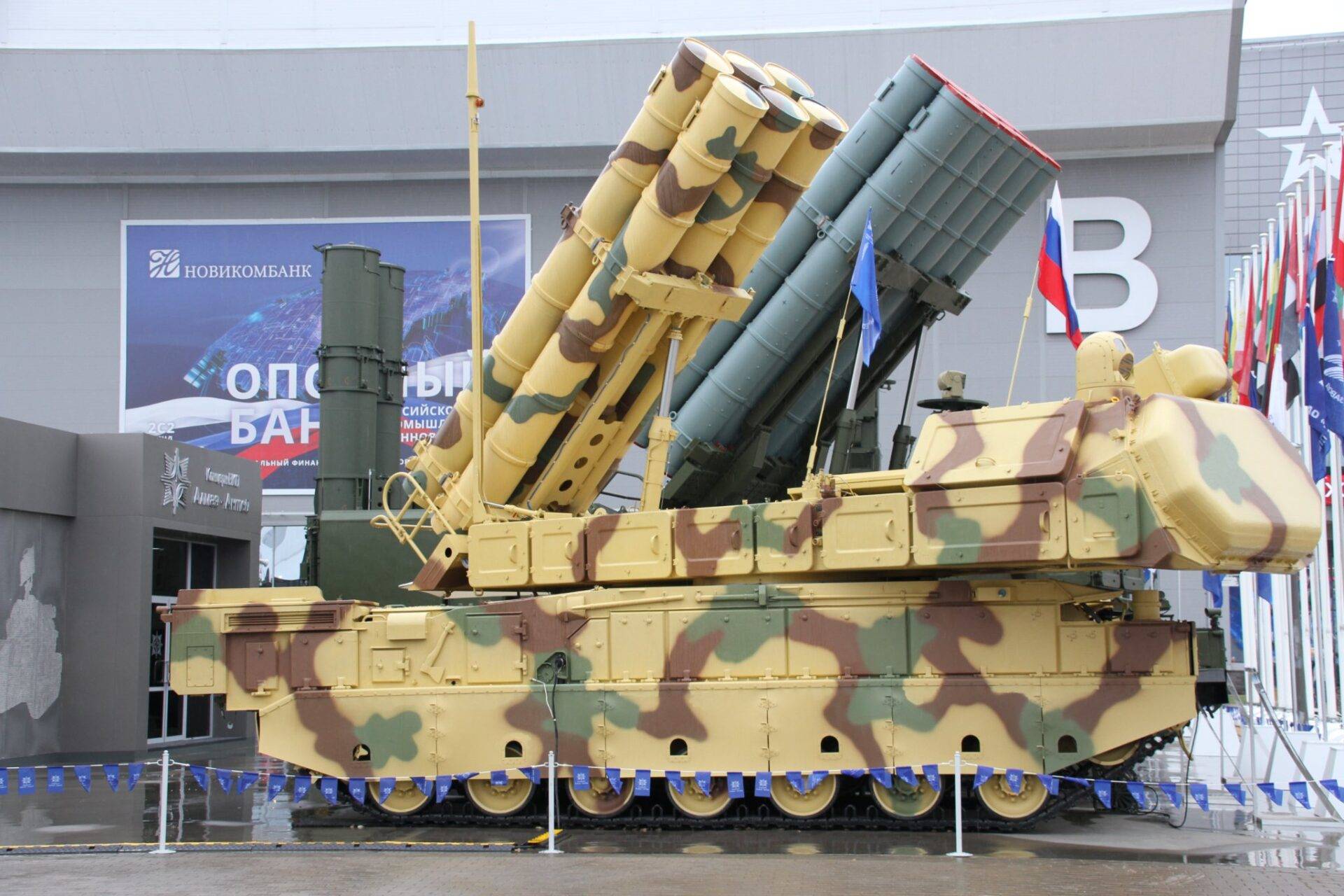Ukrainian casualties, CNN coverage of the Sept. 11 memorial observations, and other observations.
Earlier today a friend of mine on Facebook joked that because of the Ukrainian offensives, western news outlets would completely forget the Sept. 11 attacks in 2001. I replied that Sept. 11 would be rebranded as “Ukraine Victory Day.” I meant that as a joke but my God, it actually came true. Here’s a screen shot of the front page of CNN:

Ukraine, the bloody dead queen of England, and her fucking corgis are all the news right now, the Sept. 11 attacks don’t even merit a mention on the front page.
Oh, but CNN did find the time for an exclusive interview with the clown of Kiev. No, I didn’t watch it.
Anyway, about these Ukrainian offensives. A lot of commentators are mad about the Russian withdrawals. Look, these are rapid advances and it’s very impressive and all, but here are some things I have noticed from even the most gloating propaganda releases:
The first thing I notice is that, despite there being a lot of praise of the Ukrainians’ proficiency as warriors, there is NOTHING about massed artillery fires, air cover, or, for that matter, air defenses. Maybe none of the propagandists are talking about it, but I think it’s more likely that these elements simply don’t exist. I’ll bet that these Ukrainian offensives, as impressive as they’re admittedly doing, are comprised of helter skelter dashes forward, bypassing heavy resistance, and plunging as deep into Russian lines as possible. That’s good, and is incidentally roughly the same tactic the Russians themselves used in the first phase of the military operation, but it comes with problems. The biggest problem is that rapid advances leave soldiers without fire and air support or prompt access to medevacs. Those are problems the Russians had, except the Ukrainians have it much worse. I doubt those forward units out there right now have much of any protection against air attack except whatever MANPADs they were issued to bring along in their humvees and pickup trucks, and they have no protection at all against artillery.
The second thing I notice is that there’s little gloating of mass Russian casualties or surrenders. This suggests that Russian evacuations were successful in moving troops, police, and willing civilians out of harms way in time. Capturing empty villages is useful, but it’s not that useful. The Russians weren’t going to win the war by capturing territory and the reverse is also true. It’s actually especially true in reverse. Some theoretical Ukrainian victory would require destroying the armed forces of Russia and allies, which apparently, hasn’t happened, and the window for it happening has already passed.
I said this in my post Fake News Killed the Ukrainians on March 5:
Even just retreating repeatedly is impressive. An army that is able to advance and retreat multiple times, suffering losses along the way of course, while still maintaining order and fire discipline is a sign of high training, coordination, and morale, not low. But we were only seeing what we wanted to, so we saw the opposite. Let’s be honest, we don’t have this fire discipline. When American units come under fire, we tend to always shoot back, even if we don’t know exactly what we’re aiming at, and the wrong people get hit.
Yes, even from the opening days of their special military operation, even in the early engagements that were poorly planned and executed with heavy losses, Russian forces always showed a proficiency at “advancing to the rear” – and a willingness to give up territorial gains rather than suffer casualties in fights that are unwinnable, or at least unwinnable without incurring high losses.
For now, Ukraine has gained ground. But at what cost? From RT:
Ukrainian military casualties exceeded 12,000 during Kiev’s five-day counteroffensive, Russia’s Defense Ministry has claimed.
More than 4,000 Ukrainian troops were killed and another 8,000 injured between September 6 and 10 in the south and east of the country, ministry spokesman Lieutenant General Igor Konashenkov said during a daily briefing on Sunday.
I said this in my post The Fatal Scale Error of the Ukraine War:
[H]ere is my attempt to summarize how to win a battle, or a war.
Expose as much of the enemy force to attrition as possible, and for as long as possible, while minimizing your own force’s exposure to attrition, while still utilizing them 100% at key moments of the operation for the purposes they’re suitable for.
Here’s an analogy. An army is an object that’s fluid and can be molded into any shape, like water. However, the more you do this, the more your army suffers attrition. You dump a bucket of water on the floor and try to mop it up again, you’ll still lose some. And understand that attrition isn’t just combat losses. Ships and planes crash just from cruising around in peacetime. Soldiers roll their ankles, trucks break drown, and equipment wears out whether or not there’s a war on. Any military unit, whether it is a tank battalion or a crew on a warship, will degrade over time unless they are given sufficient time to rest and refit. Think of a battle like a sports game. A team with many fresh players on the bench will probably win against a team that doesn’t.
Ideally, the enemy should be exposed all the way to their rear echelons to disruption by indirect fire and air attacks. Their soldiers should all be on high alert, suffering high rates of attrition from injuries, fatigue, and desertion, but not able to use their weapons to hurt you. Meanwhile, your own army should be exposed to as little combat as possible, and maintaining large reserves. Those reserves can be used for anything, from replacing or reinforcing units actively engaged in combat operations, or opening new fronts at key times and places.
Look at this map dated today, Sept. 11:

The Ukrainians advanced through a narrow corridor, and the “exploitation” phase of their offensive seems to have been triggered by an easy landmark, the Oskol River. This is solid (and probably NATO) military planning, but it also shows clear limits of what the Ukrainian army is capable of. The initial front could have been manned by a collection of soldiers and vehicles the size of a division, perhaps even a brigade. Note I said the size of a division, not an actual division. A military unit is more than the sum of its parts. Any group of people can get into vehicles and follow a GPS unit on their dashboards. What they can’t do is conduct proper maneuver warfare, “shoot, move, communicate,” against another equal military force that has actual proper training. What happens when these attack groups collide with a brigade of Russian T-90s? I’m guessing nothing good.
When it comes to coordination and staff officer work at the brigade, division, and corps level, the effects of this coordination show the most in their fire plans and their air defenses. One of the major reasons the Iraqi army got mauled so badly in Desert Storm that air defenses are supposed to function as a network, but they weren’t – in large part because of Saddam’s weak officer corps (he had just lost a war with Iran and was rightfully afraid of a coup against him). In an attack 30+ miles into enemy territory, SAMs, radar units, and the like have to either be relocated, at severe risk of being targeted and destroyed, or just left behind, which leaves the soldiers without any protection except whatever MANPADs they have in their trucks. And remember that a stinger isn’t going to be of much use against aviation flying above 10,000 feet.
So… I don’t think the Russians are trying to exaggerate Ukrainian losses as a way to cope with being defeated. No, I think it is true, the numbers aren’t exaggerated, and the Ukrainian offensive, though successful in its initial objectives, is going to get bled out. And unlike the Ukrainian defensive positions that have held out against massed Russian fires for the past 6 months, these attacking soldiers don’t have the benefit of huge concrete bunkers and stockpiles of provisions. At whatever point their advance stops, these boys will only have whatever they brought with them in their pockets, somewhat literally.
Another element I’m not really seeing anyone address is medevac. Part of what keeps the Ukrainian armed forces so resilient is the ability to patch up wounded soldiers quickly and then return them to the front. Thousands of soldiers pushed to the borders of Russia itself won’t have that benefit. Imagine being a soldier who takes even a small bit of shrapnel to the leg 40 miles away from his own lines. And he’s not the only one, there are thousands of other injured. Did this attack force bring hundreds of surgeons and mobile field hospitals with them? Maybe, and there’s really no way right now to know, but I doubt it. The problem is that surgeons are rare and difficult to replace. Every soldier who went on this expedition is easily replaced, and that’s the reason he was sent. I think very, very few of these soldiers are ever coming home.
Now that the Ukrainians have proven themselves as an effective fighting force, they’ll be given new vehicles, weapons, and more trained soldiers. Anyone who went on this offensive can and probably already has been written off.
Regarding the question of foreign fighters. Yes, the rumors of there being many foreign fighters in the ranks of the Ukrainian offensive are probably true. And they’re just as replaceable as the Ukrainians themselves. NATO has been at war for more than 20 years, and has literally millions of combat veterans. What’s a combat soldier to do after the war he was trained for ends? He can be a janitor or a a street sweeper. Or he can volunteer for the Ukrainian army to find death or glory. So no, if anyone had this idea that Ukraine will run out of trained foreign soldiers quickly can forget it. There are plenty.
Ian Kummer

Support my work by making a contribution through Boosty
All text in Reading Junkie posts are free to share or republish without permission, and I highly encourage my fellow bloggers to do so. Please be courteous and link back to the original.
I now have a new YouTube channel that I will use to upload videos from my travels around Russia. Expect new content there soon. Please give me a follow here.
Also feel free to connect with me on Quora (I sometimes share unique articles there).



Some news updates;)
https://t.me/SolovievLive/126600
https://t.me/tass_agency/154961
Also in the news: Medvedev confirmed that goals of the Mil. operation will be achieved.